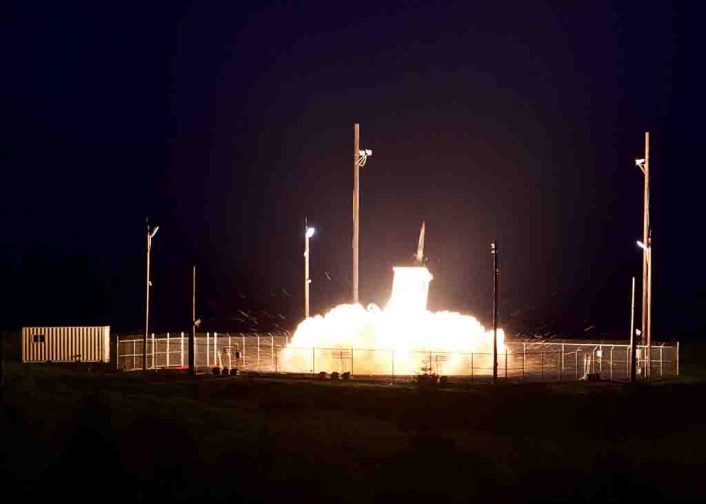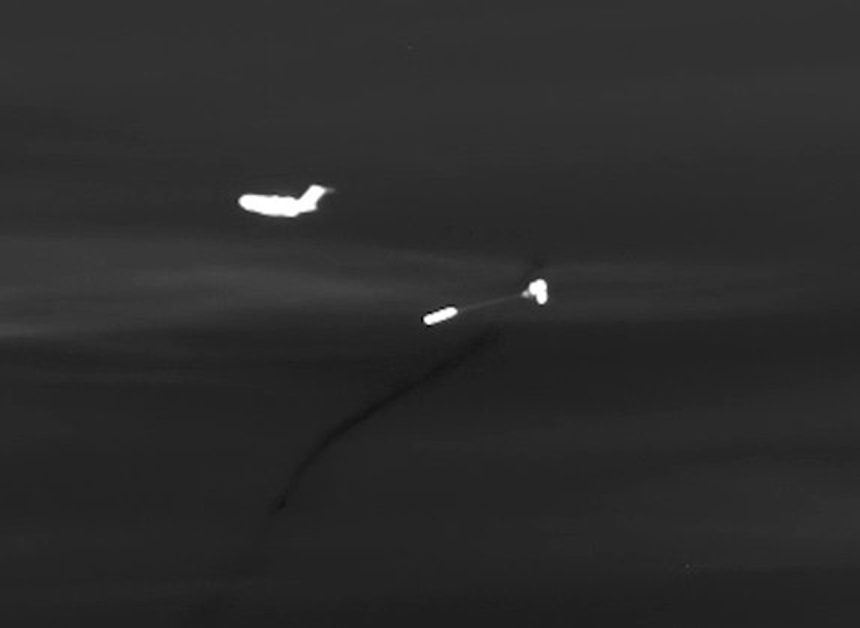A C-17 Globemaster III assigned to the 418th Flight Test Squadron air-launched a ballistic missile target over the Pacific Ocean.
On July 11, a U.S. Air Force C-17 airlifter supported a Terminal High Altitude Area Defense test at Pacific Spaceport Complex Alaska in Kodiak, Alaska.
Indeed, the C-17 air-launched an IRBM (Intermediate Range Ballistic Missile) target north of Hawaii that was detected, tracked and intercepted by the TGAAD weapons system.
According to an Air Force release, the test, designated Flight Test THAAD (FTT)-18, was executed by MDA, supported by elements of the U.S. Army, Joint Forces Component Command for Integrated Missile Defense, U.S. Air Force, U.S. Coast Guard, Pacific Spaceport Complex Alaska, Ballistic Missile Defense Operational Test Agency, DoD Operational Test and Evaluation, and the Army Test and Evaluation Command.
This was the 14th successful intercept in 14 attempts for the THAAD weapon system. According to MDA, “the THAAD element provides a globally-transportable, rapidly-deployable capability to intercept ballistic missiles inside or outside the atmosphere during their final, or terminal, phase of flight. The MDA says THAAD is strictly a defense system. The system uses hit-to-kill technology whereby kinetic energy destroys the incoming target. The high-altitude intercept mitigates effects of enemy weapons before they reach the ground.”

The 418th Flight Test Squadron has supported these MDA tests over the years.
“The 418th is the only organization on Earth capable of airdropping MDA’s largest and most capable ballistic test missiles providing a vital examination of U.S. strategic defense assets,” said Lt. Col. Paul Calhoun, 418th FLTS commander. Soldiers from the Army’s 11th Air Defense Artillery Brigade conducted launcher, fire control and radar operations using the same procedures they would use in an actual combat scenario. Soldiers operating the equipment were not aware of the actual target launch time.
The successful demonstration of THAAD against an IRBM-range missile threat comes amidst growing concern about the country’s defensive capability against developing missile threats in North Korea.
Ballistic missiles have been carried by U.S. Air Force cargo aircraft during testing activities conducted in the past.
In 1974, the U.S. thought that the best way to preserve its ICBMs (Inter Continental Ballistic Missiles) from Soviet nuclear strikes was to load them in C-5 Galaxy airlifters and keep them on the move.
A three-stage Minuteman, 56 feet in length and 86,000 pounds in weight, was attached to some parachutes that could drag it out of the cargo hold and then point it upward, then it was loaded into a Galaxy and air launched over the Pacific from the aircraft: a timer ignited the rocket motor and the missile flew for about 25 seconds before it cascaded into the Pacific Ocean.









